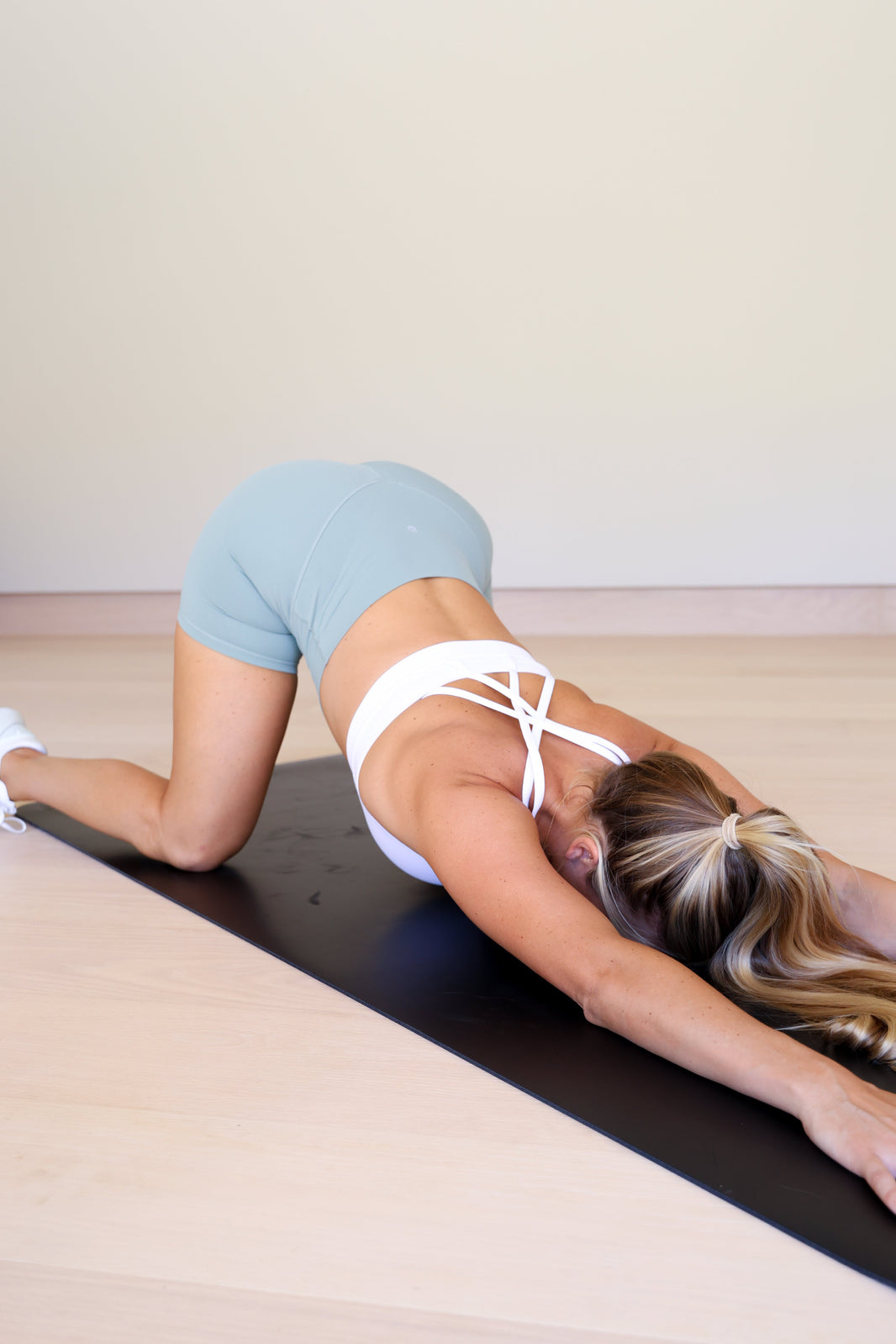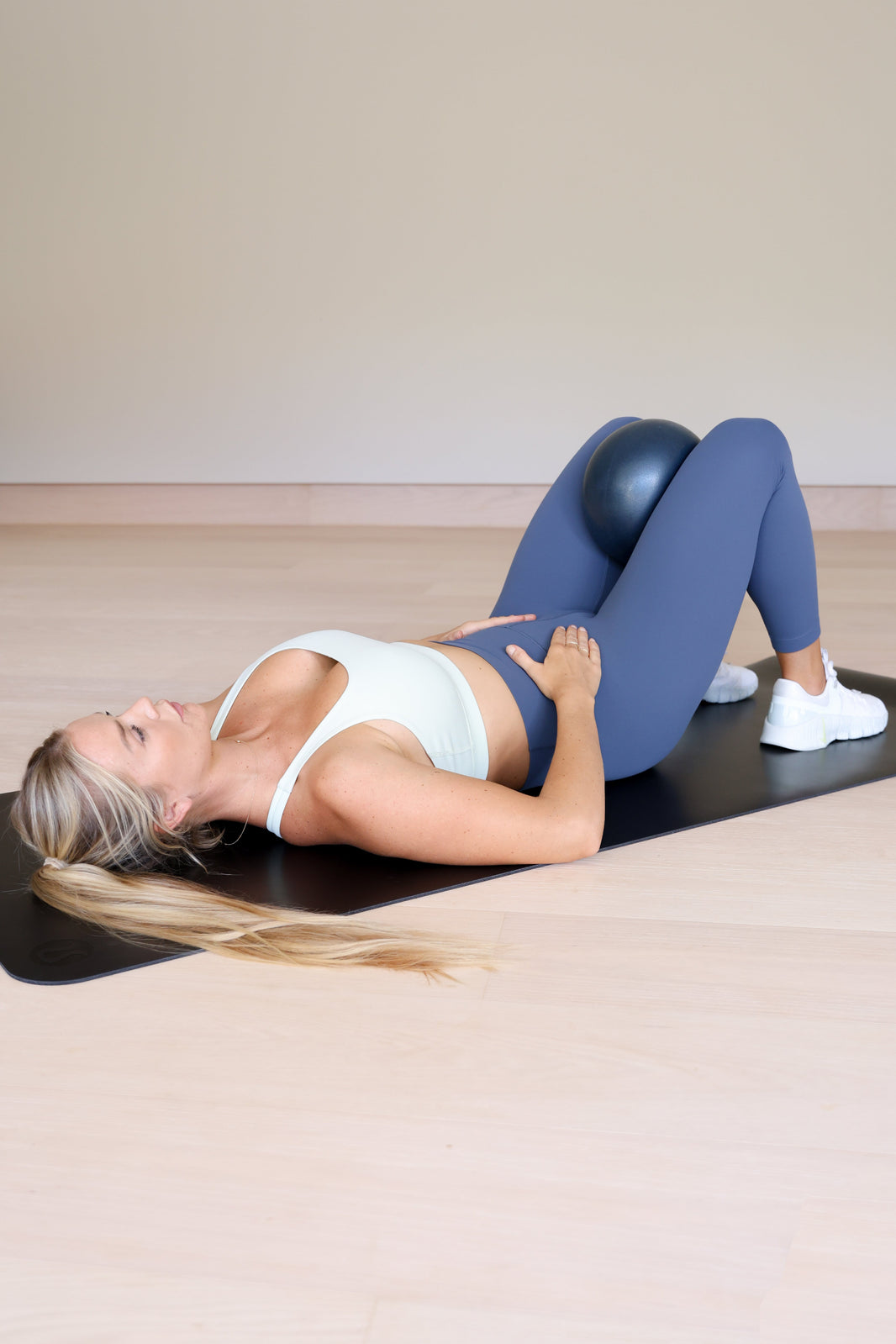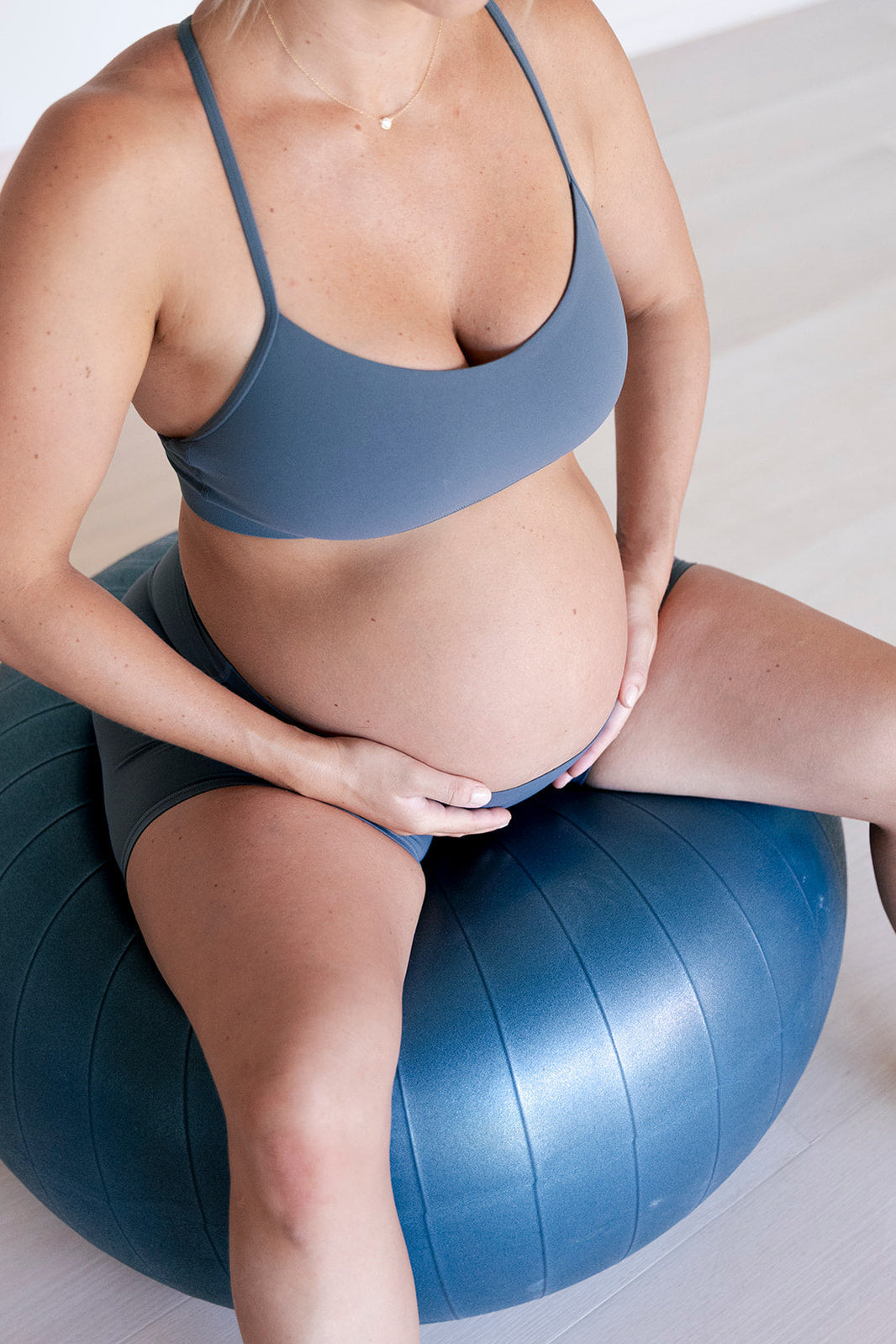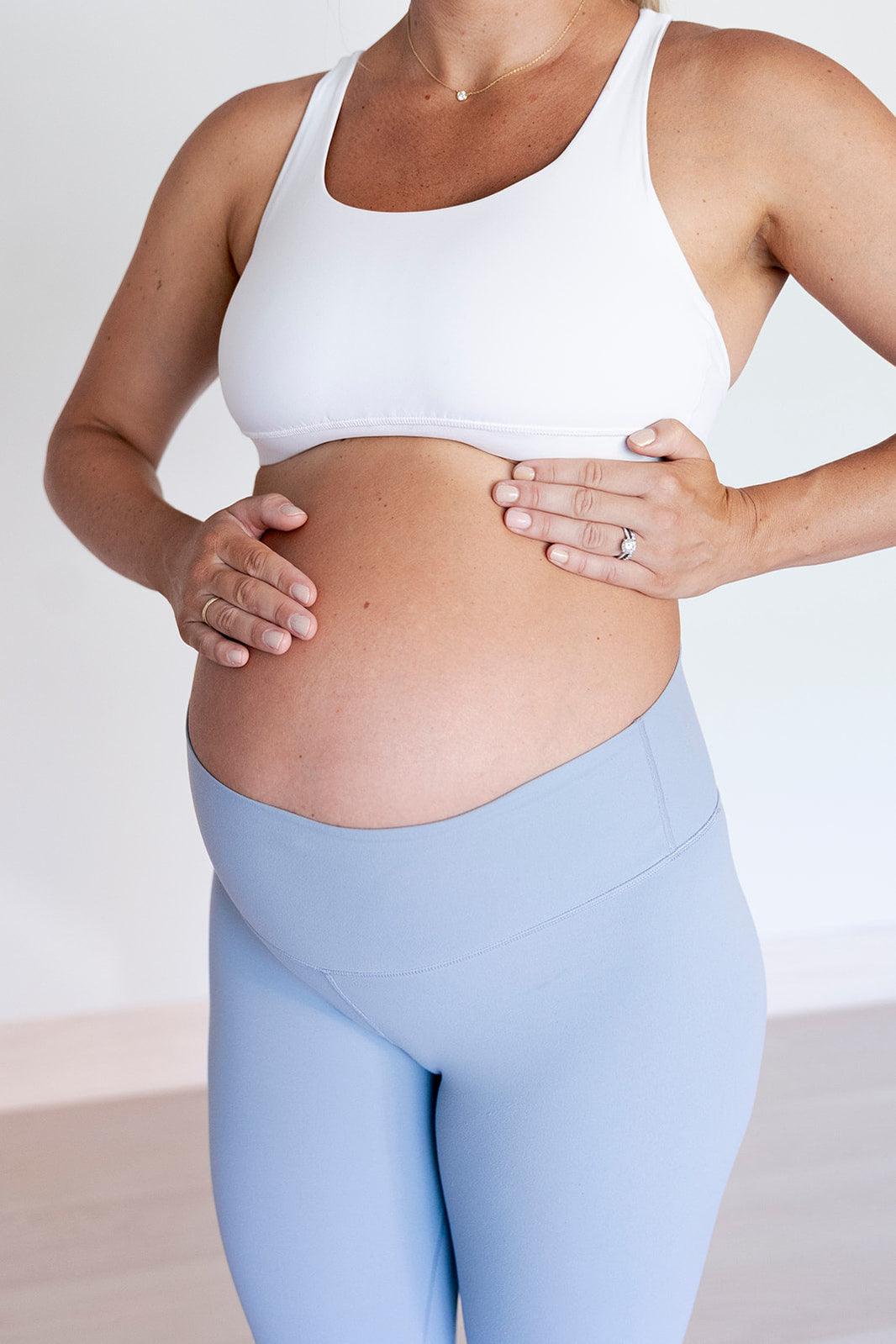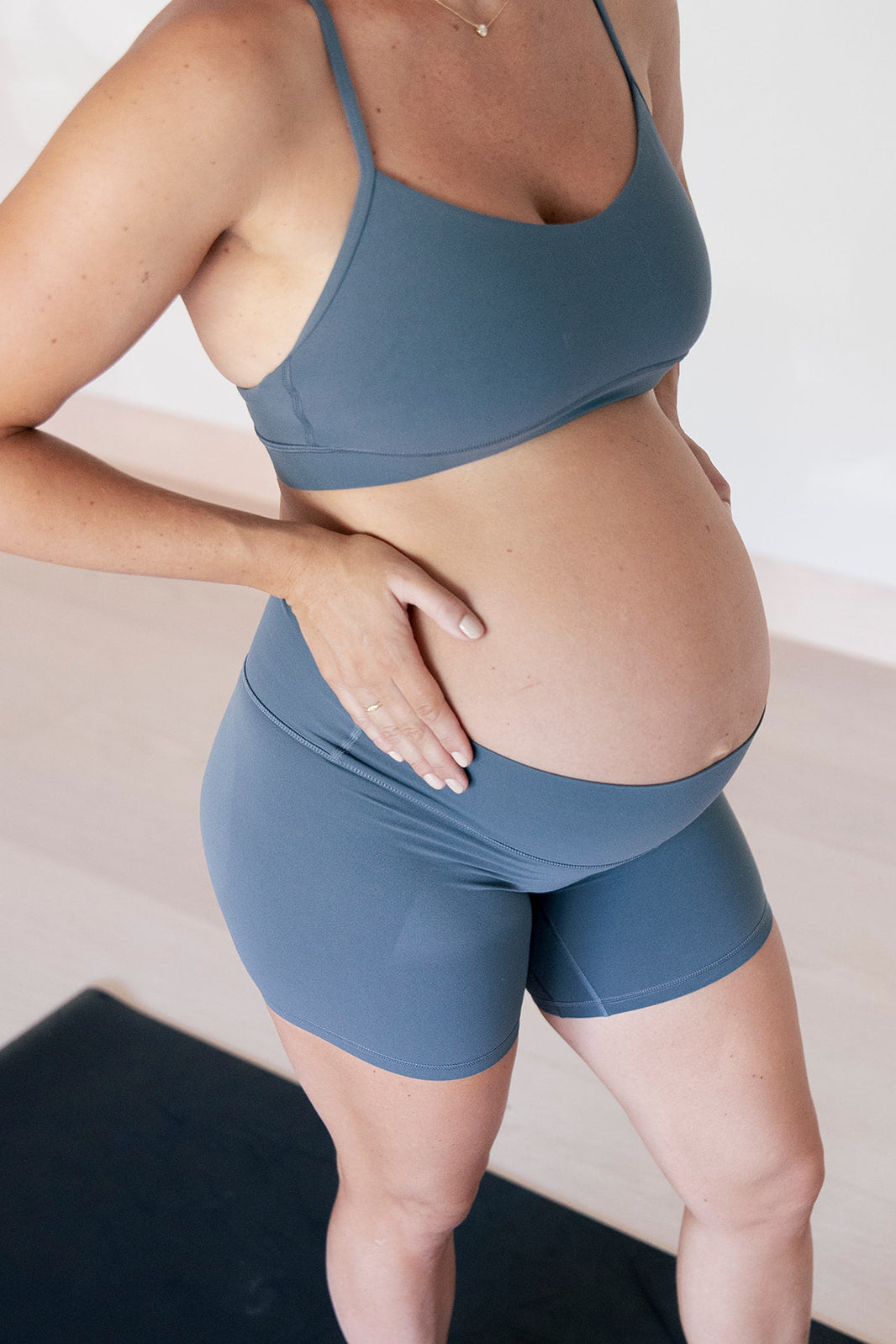The first six weeks after giving birth—often called the “fourth trimester”—are a unique and important time of recovery. While movement plays a vital role in supporting healing, not all types of exercise are appropriate during this early postpartum phase.
If you’re a new Mama wondering what’s safe, what’s helpful, and what to avoid, this post will walk you through it clearly and confidently—without fear or overwhelm.
The Early Postpartum Body: What’s Happening?
After delivery, your body is actively healing and readjusting:
• Uterine involution: The uterus is shrinking back to its pre-pregnancy size.
• Tissue healing: Whether you had a vaginal birth or a Cesarean section, muscles, fascia, and skin tissues are regenerating.
• Hormonal shifts: Hormones like relaxin remain elevated, which keeps joints and tissues looser and more vulnerable to strain and due to the sudden drop in estrogen that can happen, our body feels like it’s going through periods perimenopause causing our pelvic floor muscles to be more sensitive and decreased support of the ligaments and tissues that support our internal organs.
• Pelvic floor recovery: The muscles supporting your bladder, uterus, and bowels have been stretched or stressed from supporting a growing baby through pregnancy and if you had a vaginal birth, they had major impact! They are working to regain function and are in a bit of a shock right now.
Movement during this time should focus on supporting this natural healing process—not rushing strength gains or endurance.
What Type of Movement Is Safe in the First 6 Weeks?
1. Breath work
Breath work is one of the safest and most effective ways to start reconnecting with your core and pelvic floor postpartum.
Diaphragmatic breathing encourages optimal pressure management inside your body and helps restore your pelvic floor mobility:
• Inhale slowly through your nose, expanding your ribs and belly slowly.
• Exhale fully through your mouth, let your belly fall and rib cage draw down.
You can also begin gentle pelvic floor breathing—allowing the pelvic floor to move naturally with your breath. Work on inhaling to imagine your pelvic floor muscles opening as if you are “breathing into your holes” and exhale passively.
2. Walking
Short, easy walks are a great way to support circulation, lung function, mental health, and gradual physical recovery.
• Start small: Around your home or a few minutes outdoors.
• Listen to your body: Increased bleeding, pelvic pressure, or sharp fatigue after walking are signs to scale back and rest.
• Progress gradually: Longer walks can come as endurance improves and you are symptom free.
Walking is safe and beneficial when approached with patience and attention to how your body responds.
3. Gentle Core Connection
Early postpartum, focus on re-establishing the mind-to-muscle connection with your deep core muscles rather than trying to “strengthen” through traditional ab exercises.
Start by practicing:
• Gentle exhale-based core activation (think of lightly drawing your lower belly in during exhale without bracing or bearing down. You can do this by imagining pulling your front 2 pelvic bone togethers or imagining a zipper zipping from your pubic bone up to your belly button). Practice this activation supine and sidelying first, then move into quadruped, sitting, and standing when you feel you hav more control and awareness.
• In standing, work on postural alignment for improving deep core engagement: stacking your ribs over your pelvis, keeping weight shift equal between your toes and heels, and avoiding clenching your bottom under
This type of connection work is the foundation for stronger movement later.
4. Mobility Exercises
Light mobility work can help ease stiffness and discomfort from feeding, holding your baby, and disrupted sleep:
• Cat/Cow stretches: Gently moving through spinal flexion and extension.
• Seated hip openers: Sitting with the soles of your feet together, allowing gentle hip stretch.
• Side-lying lat stretches: Opening the chest and rib cage while reaching over head to stretch your side body
Keep movements smooth and pain-free, and avoid pushing into deep stretches.
5. Pelvic Floor Awareness
Rather than rushing into Kegels, early postpartum is the time to simply reconnect with pelvic floor mobility:
• Focus on feeling the natural rise and fall of the pelvic floor during breathing.
• You can start light pelvic floor squeeze and lift with your exhale. Imagine stopping gas and zipping up to stop urine OR imagine your labia grabbing a blueberry and lightly lifting it up and in.
• Prioritize control and coordination—not maximum effort.
No need to force strong contractions; early on, mobility and coordination are more important than strength. If you’re unsure how things feel, or if you’re noticing symptoms like heaviness or pain during this, working with a pelvic floor physical therapist can be a helpful next step.
6. Light Hip Strengthening (Once Core Connection Is Re-established)
By around week 3–4 postpartum (depending on your healing and core connection), gentle hip strengthening can be introduced. These exercises help restore pelvic stability and support functional daily activities:
• Side-lying clamshells: Strengthen the hip rotators without straining the core.
• Glute bridges: Gentle activation of the glutes while maintaining core engagement.
• Standing hip abductions: Building hip and pelvic support.
Start with low resistance and focus on quality of movement over intensity.
7. Functional Movement Practice
Daily activities—getting out of bed, lifting your baby, standing from the floor—are opportunities to move well and protect your healing tissues.
• Roll to your side to get up rather than sitting straight up from lying down.
• Exhale with exertion (when lifting or standing) to engage your core naturally.
• Avoid breath-holding during movements, which can create excess intra-abdominal pressure.
Building these habits early can make a significant difference in long-term core and pelvic floor health.
Movements to Avoid in the First 6 Weeks
Movement is valuable during postpartum—but certain types should be delayed until healing is further along.
1. High-Impact Exercises
Running, jumping, and plyometric training create high forces through the pelvic floor and abdominal wall that the body isn’t ready to absorb yet.
Save these for later stages of recovery, when your body has rebuilt its foundational strength.
2. Heavy Lifting
Limit lifting to the weight of your baby and essentials during early weeks. Heavy lifting can strain healing tissues, contribute to prolapse symptoms, and delay recovery.
3. Core-Heavy Exercises
Movements like crunches, sit-ups, full planks, or intense twisting exercises without proper deep core and pelvic floor coordination and base of support can create poor intra-abdominal pressure management, placing strain on the connective tissue between your 2 abdominal muscles and can create delays in healing an abdominal separation (diastasis recti).
Focus on restoring inner core coordination first.
4. Deep Stretching
Because connective tissue is still influenced by relaxin postpartum, pushing into deep stretches can overstress joints and tissues.
Keep mobility gentle and supportive.
5. Movements That Create Intra-Abdominal Pressure
Straining (whether during exercise or even during bowel movements) can overload healing tissues.
Breathe naturally during movements, and address constipation early if needed to avoid bearing down.
Red Flags That Suggest You Should Modify or Seek Help
Pay attention to how your body responds. Contact your healthcare provider or a pelvic floor therapist if you experience:
• Increased vaginal bleeding with activity
• New or worsening pelvic pressure or heaviness
• Urinary or bowel leakage
• Sharp pain with movement
• A sensation of something “falling out” in the vaginal area
Early intervention can prevent small issues from becoming bigger problems.
Building a Stronger Foundation
Postpartum recovery is not about “getting your body back”—it’s about moving forward safely and effectively into your next stage of strength and health.
In the first six weeks, focus on:
• Restoring breathing patterns
• Supporting tissue healing
• Rebuilding core coordination
• Gradually reintroducing strength through low-load, controlled movements
This approach lays the groundwork for higher-intensity exercise later on—and can significantly reduce your risk of developing long-term core and pelvic floor issues.
Consistency, patience, and progressive loading over time will create better results than rushing back into intense exercise too soon.
Movement during the early postpartum period should be viewed as part of your healing strategy—not a race to reclaim fitness milestones.
There is no single “right” timeline for recovery because every body, every birth, and every experience is different.
By focusing on breath, mobility, gentle core and hip activation, and functional movement habits, you’re giving yourself the strongest possible foundation for the months and years ahead.
When in doubt, move with intention, adjust based on your symptoms, and reach out to a qualified professional if you need individualized support.
You’re not just recovering, Mama—you’re rebuilding.



